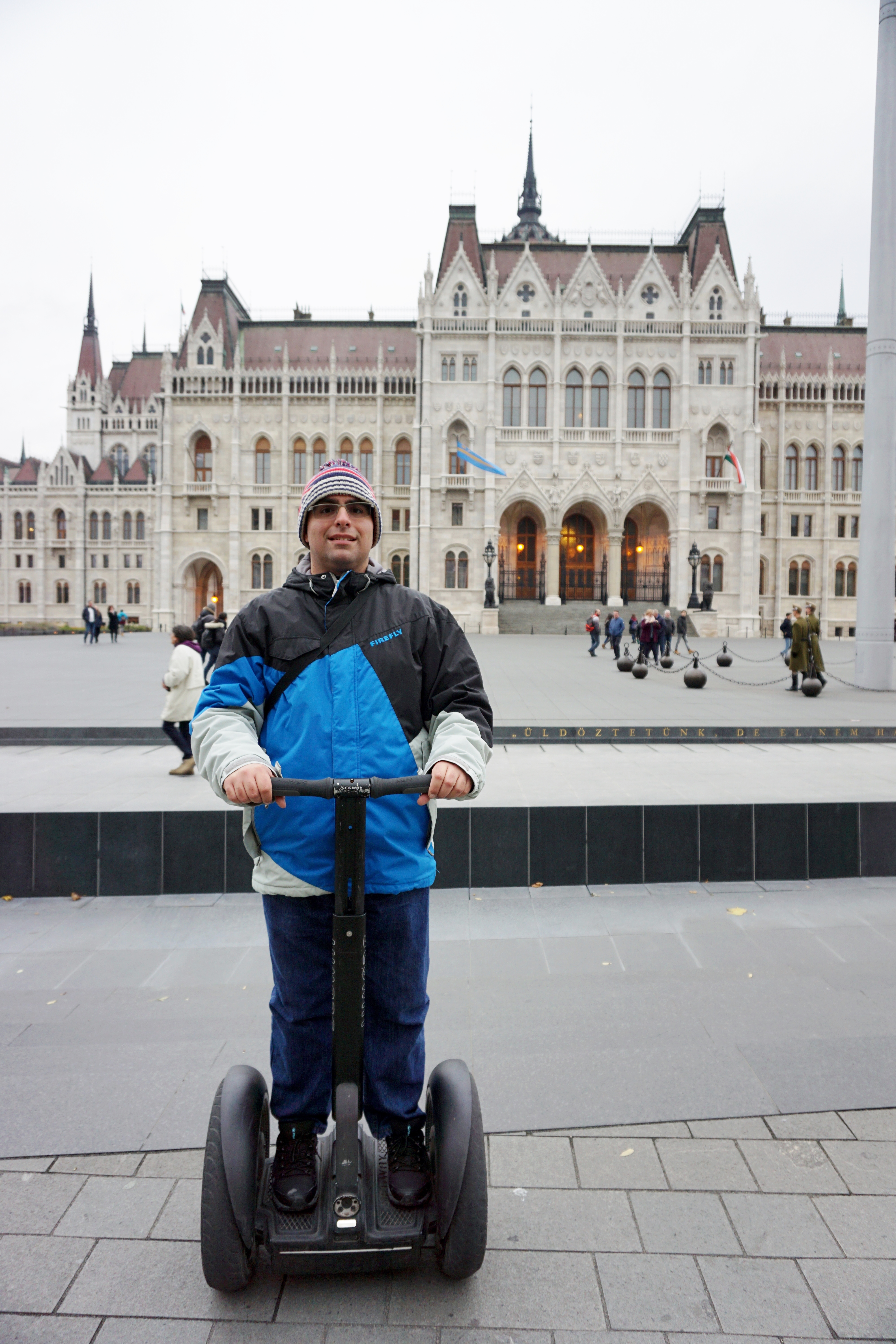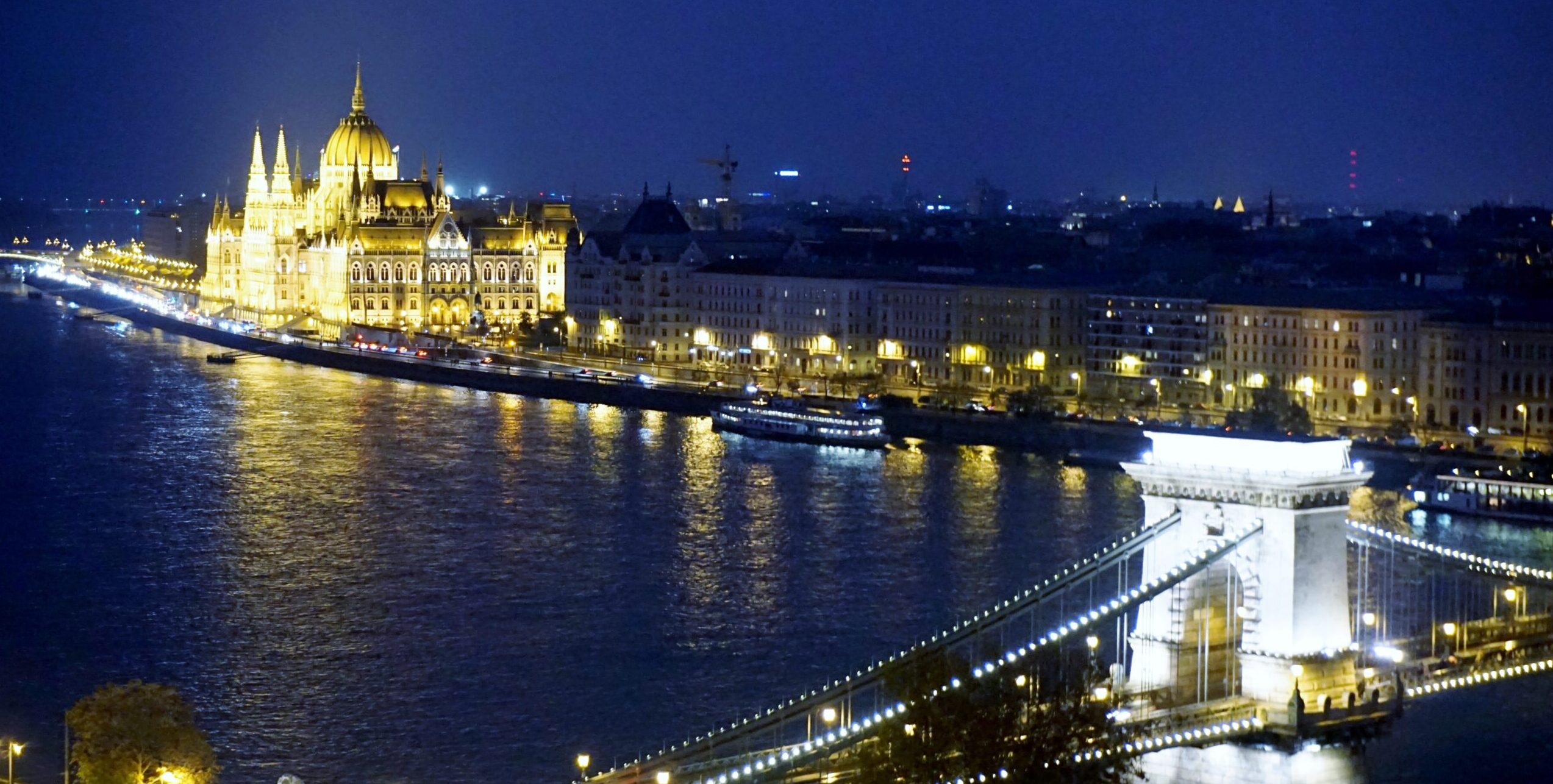
Budapest has lots of famous places to see, making it one of the most visited cities in Eastern Europe. Covering an area of over 500 square kilometres, the capital of Hungary is home to about 20% of the country’s population. Budapest is the country’s main political, commercial, industrial and cultural center, and an important hub in Eastern Europe. The city, one known as the “Queen of the Danube” sprawls the Danube in a beautiful setting. Many now call it the City of Bridges or the City of Waters.
In order to understand the history by seeing the city’s many attractions, one must briefly understand the history in a nutshell.
Table of Contents
History in a nutshell
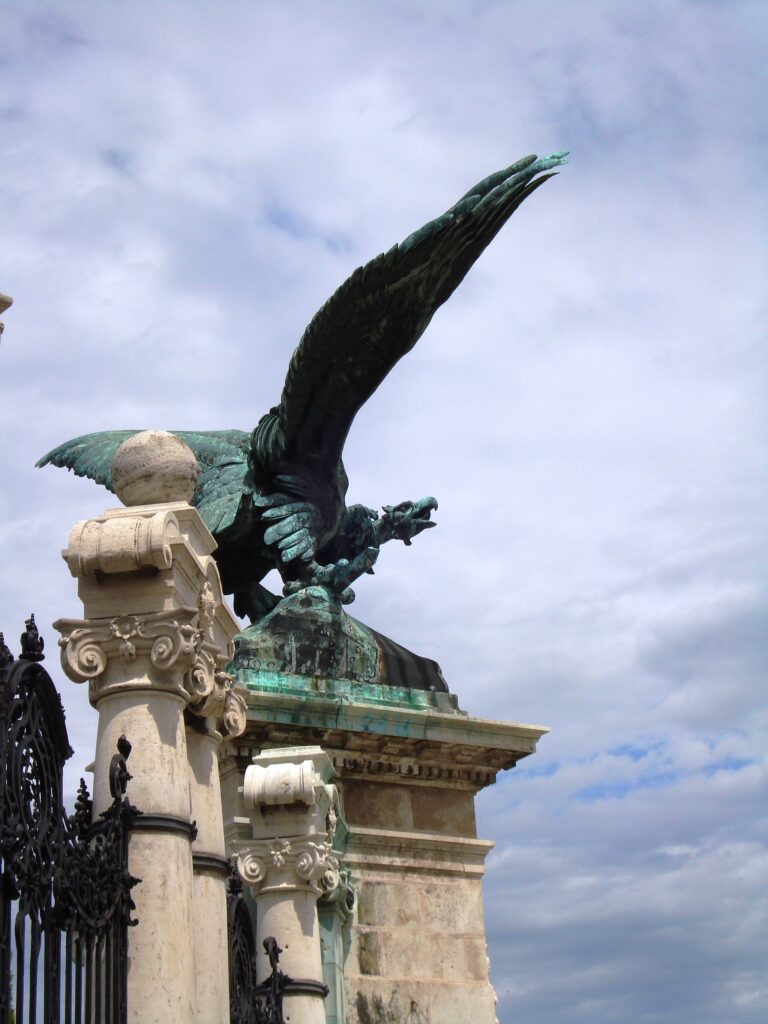
This statue, located in front of the Buda Palace, is the national symbol of Hungary. It is known as the Turul Bird. The statue symbolizes the first Magyars who arrived from the plains of central Asia. In 896, the sword was dropped from this spot, which signaled that this had become their homeland. The Magyars then created a long story over a period of 1000 years, which in the end, gave the nation of Hungary and made it what it is today. After the Magyars settled here, waves of different ethnic groups all migrated to Hungary. It became a mixture of Germans, Slavs, Jews, Gypseys, Turks and more. All those mixes created a gulash of cultures that has become what Budapest is today.
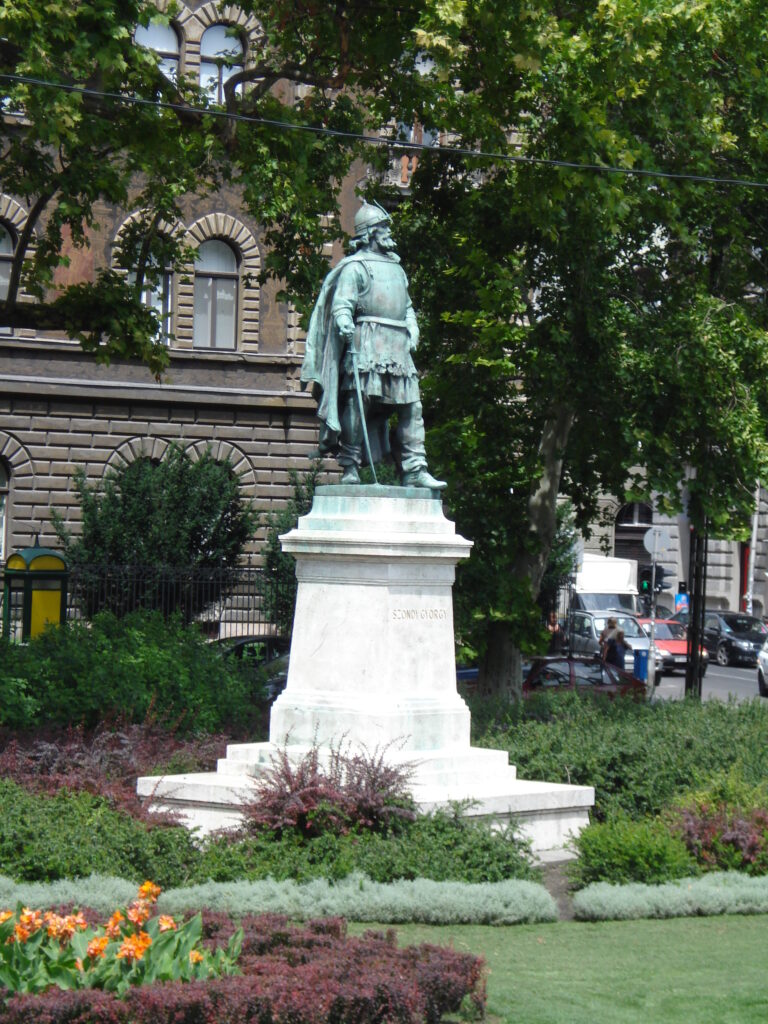
From the 16th century, Hungary was under Turkish Invasion 150 years. The Turks were thrown out in 1686, after which, as part of the Hapsburg Empire, Hungary was strengthened by an inflow of Germans, which made the city more European. In the second half of the 1800s, the Hapsburgs granted a constitutional monarchy, and made Hungary one of their partners. And that was when the Astro-Hungarian empire was formed. Then in 1896, Hungary celebrated its 1000th birthday.
After WWI, the Hapsburgs departed Hungary, and the country became completely independent. But then the Nazis arrived, followed by the communists. The republic of Hungary was proclaimed in 1949, and freedom was won back in 1989 after the collapse of the Soviet Union. 1989 also marked the end of communism. Since then, Budapest has bloomed. Hungary joined the European Union in May 2004.
Today, Hungary is ruled by democratic representatives rather than an emperor. While the city is becoming increasingly modern, many buildings survive from the communist age. The streetcars that one sees in Budapest date back to the communist era.
Attractions in Pest (east side of the Danube)
Hungarian Parliament
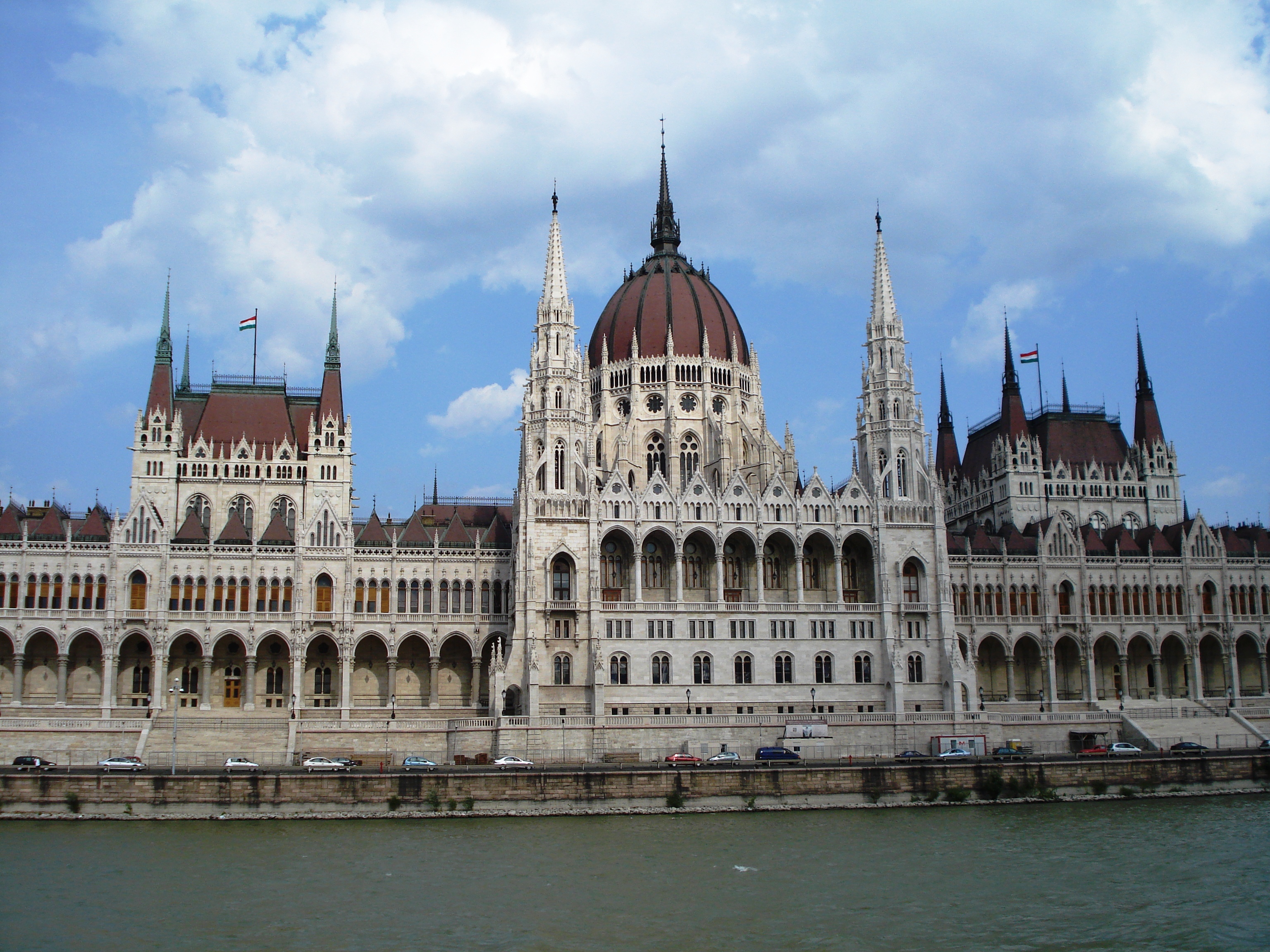
Inaugurated in 1904, the Hungarian Parliament is the second largest Parliament in Europe, and the third largest in the world. The building was built in neo-Gothic revival style, similar to Westminster Abbey in London. The 96-meter high dome has 96 steps on the main staircase. This number symbolizes the year of the settlement of Hungary, which was 896. The building contains 700 rooms and 365 towers throughout the building, symbolizing 1 tower per day of the year. The many halls around the building were designed to help conduct the multi-national Hapsburg empire. Around the Parliament one will find 88 statues of kings and military people. Inside the parliament, one will find King Steven’s crown jewels displayed, and rooms filled with arts and crafts from the ages of Hungary’s history.
Address: Budapest, Kossuth Lajos tér 1-3, 1055 Hungary
Getting there: M2 subway line to Kossuth Lajos ter station
Opening hours: 08:00-18:00 weekdays, 08:00-16:00 weekends
Entry fee: €12
Important: they will ask for a piece of ID when signing up for the tour. Foreign travelers must carry their passport, and not just any piece of photo identification.
Szechenyi Thermal Baths
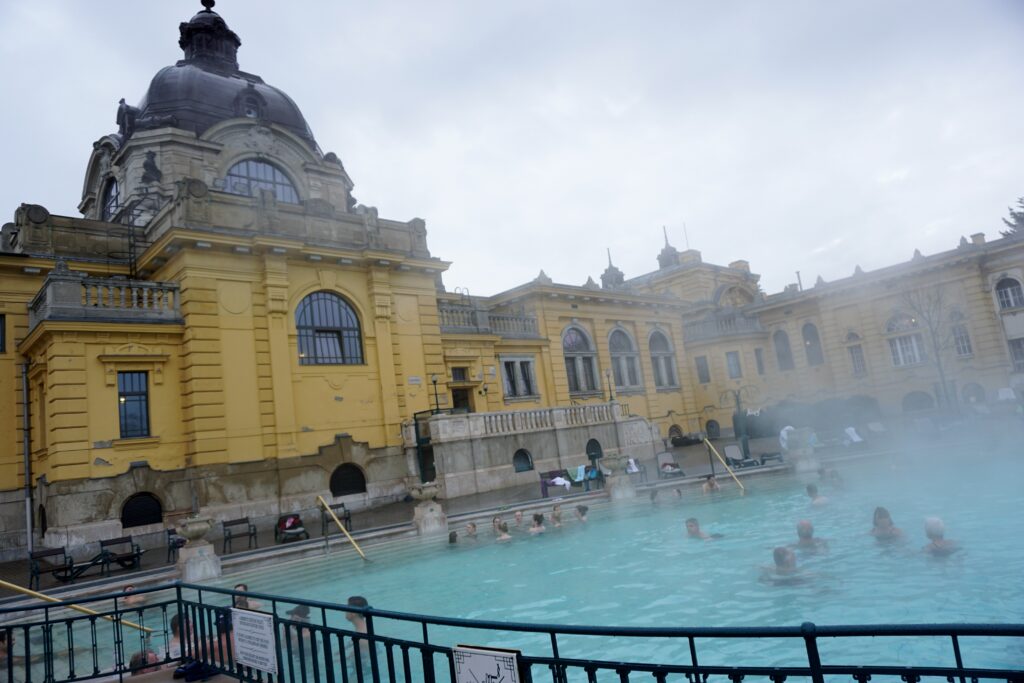
As many say, “Budapest is Hot”. As the largest medicinal bath in Europe, this attraction is equally as famous for travelers as it is for locals. Budapest lies on a layer of thin crust, which powers over 100 thermal springs around the city. Open year round, they are the busiest from fall to spring, when one can enjoy bathing in water as warm as 45 degrees Celsius while outside it can be freezing cold. It’s pretty much a replica of the Blue Lagoon in Iceland.
Address: Budapest, Állatkerti krt. 9-11, 1146 Hungary
Getting there: M1 subway line to Szechenyi Furdo station
Opening hours: 09:00-19:00 daily
Entry fee: €24 on weekends, cheaper on weekdays
St. Stephen’s Basilica
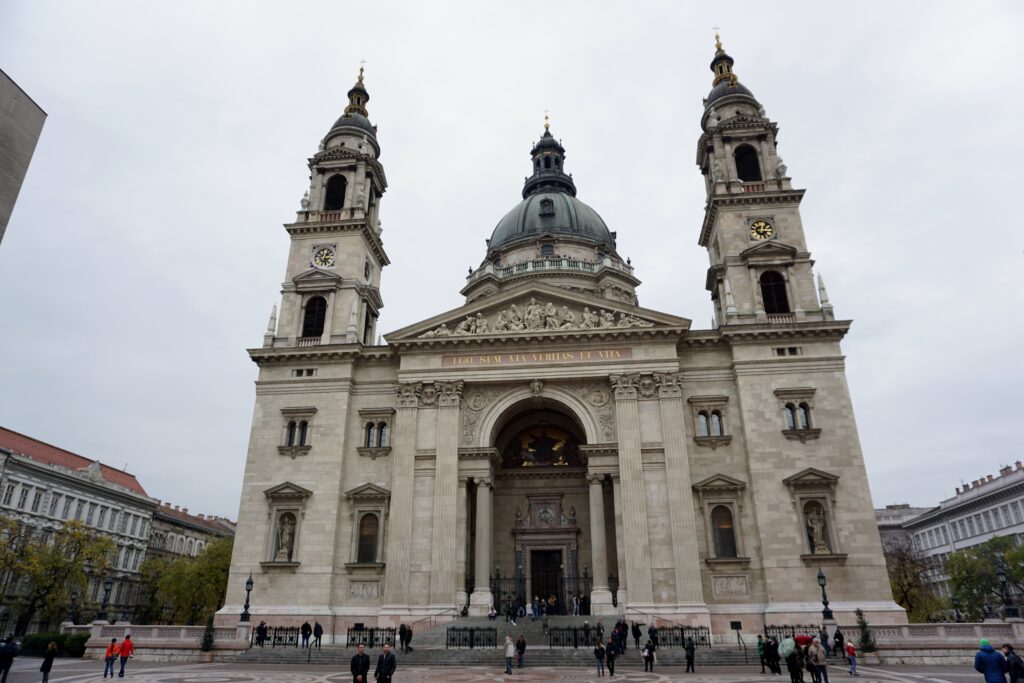
Built in 1905 in neo-classical style, St. Stephen’s Basilica was named in honor of Hungary’s first king. Covering an area of over 4000 square meters, it is known as the largest catholic church in Budapest. The mummified right hand of St. Stephen is housed here, along with an astonishing 8000 worshippers. Its interior is laid out in a Greek cross. The cupola of the church is 96 meters tall and offers a panoramic city view.
Address: Budapest, Szent István tér 1, 1051 Hungary
Getting there: M1 subway line or bus 72 to Bajcsy-Zsilinszky station
Opening hours: 09:00-17:00 weekdays, 09:00-13:00 Saturdays, 13:00-17:00 Sundays. Religious ceremonies can affect these hours.
Entry fee: €5 for a tour, €2 for admission to the cupola. Without a tour, admission is free, however, it is a normal practice to tip.
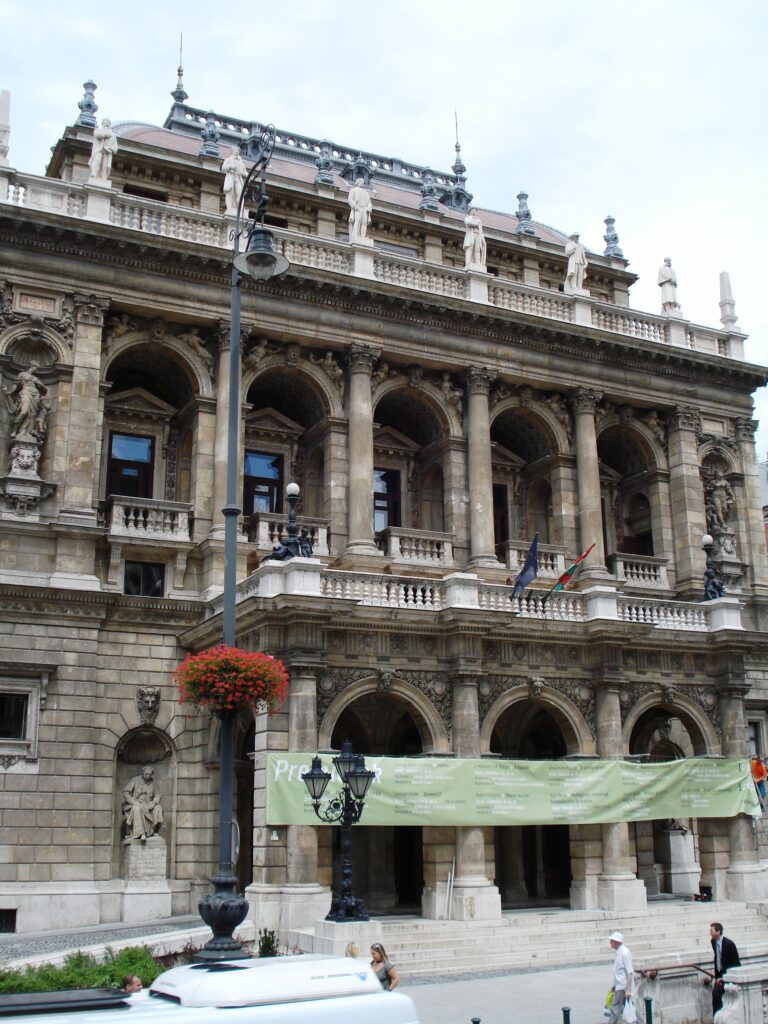
Hungarian State Opera House
Opened in 1884 and built in neo-classical style, the Hungarian State Opera House holds great concerts and performances. Whether you take a tour or attend their performances, it is clearly seen that the locals have the Hapsburg appreciation for great music in their tradition. For a taste of Hungarian culture, attend one of their gypsy or folk concerts.
Getting there: M1 subway line to Opera station
The Synagogue
Currently a Jewish church, this used to be a Budapest ghetto during WWII. It currently seats 3,000 people and is the largest one of its kind outside New York City.
Getting there: M2 subway line to Astoria station
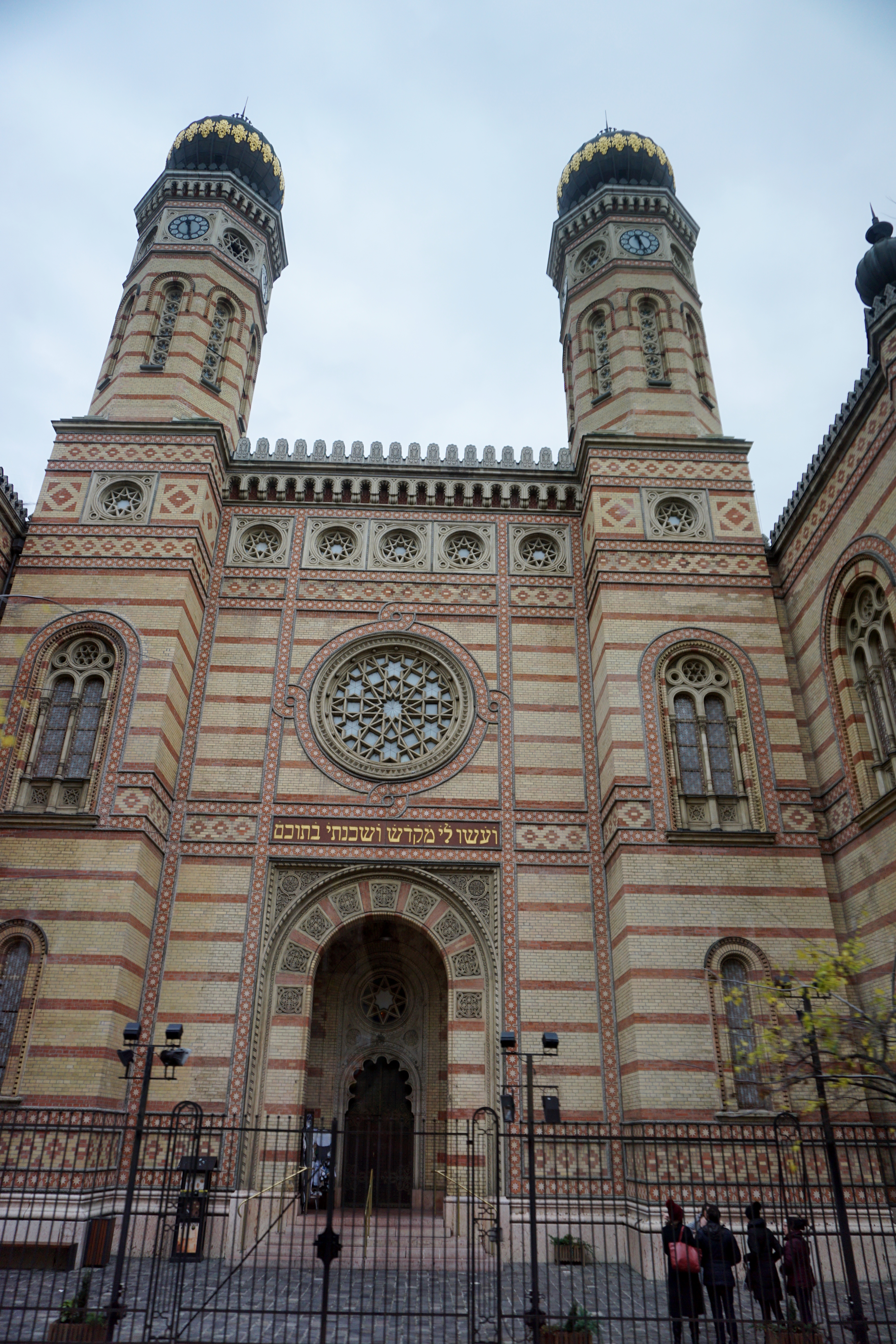
Heroes Square
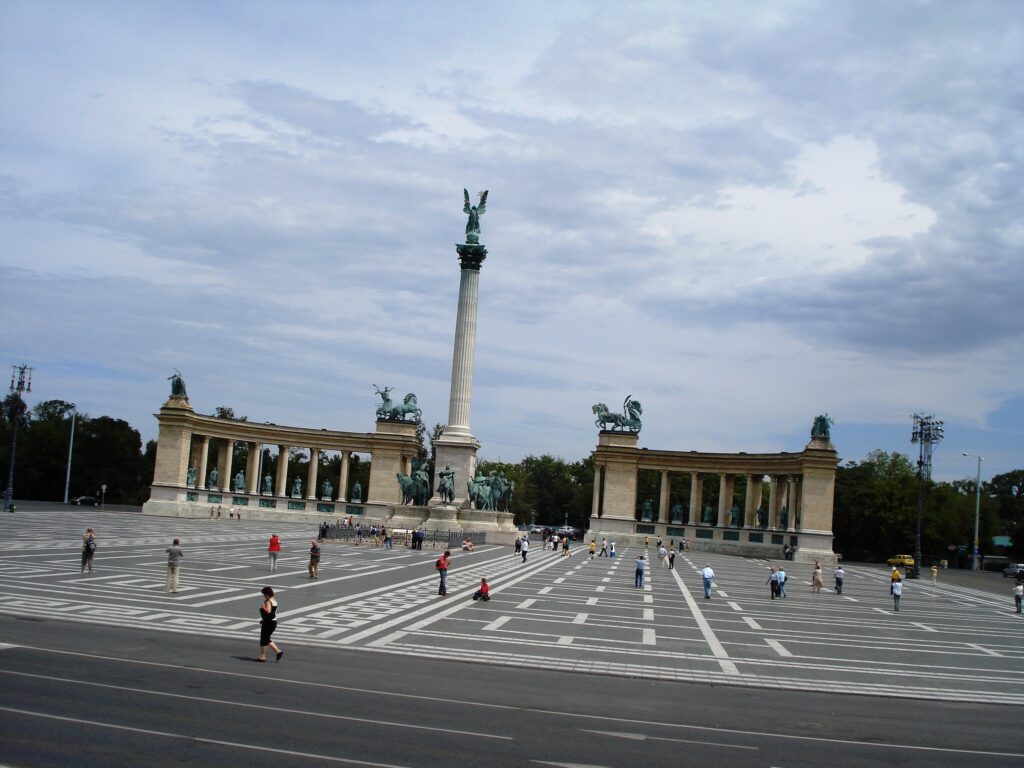
Identified as the Champs Elysees of Budapest, this is the most beautiful square in Budapest. In 1896, when Hungary celebrated their 1000th anniversary, this was the entrance to the National Millennium World Exhibition. It serves as memory of the Hungarian heroes who died during the war of independence. Between the columns of the colonnade are statues of Hungarian rulers and princes. The column in this square is the Millennium Column, and contains statues of Arpad and the other 6 conquering Magyar chiefs. Work on the monument and other related projects took longer than expected, and although the anniversary is in 1896, the central column and statue were only ready in 1897.
Address: Budapest, Hősök tere, 1146 Hungary
Getting there: M1 subway line or bus 72 to Hosok tere station (which translates to the actual name of the monument).
Szechenyi Chain Bridge
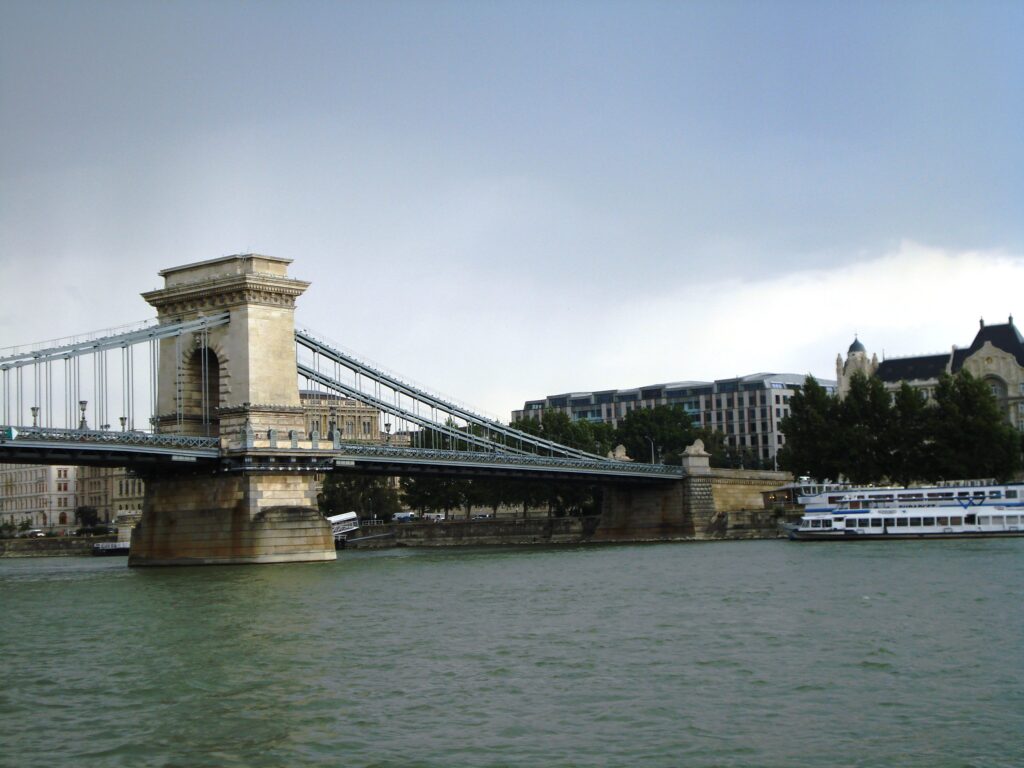
This was the first bridge to be built over the Danube, connecting Buda and Pest. One can notice that from the architecture of the bridge, which no other bridge in Budapest has. The lions on the bridge imply how important this transportation link was when it was built, which is an interesting but sad story. Before that, locals would need to either have boats to cross the river. In the winter, one would need to walk over the frozen waters of the Danube. If the river was not frozen enough, they would get stuck on the other side. Once, someone got stuck on the other side for longer than a week, while trying to get to his dad’s funeral, which he obviously missed. He became extremely frustrated, to the point that he commissioned the building of this bridge. Out of the bridges that exist today collapsed during WWII and were all rebuilt. This one survived ever since it was built in 1849. This bridge is a sight to see at night when it is illuminated.
Getting there: M1 subway line or bus 72 to Bajcsy-Zsilinszky station
Attractions in Buda (west side of the Danube)
Buda Palace (former Royal Palace)
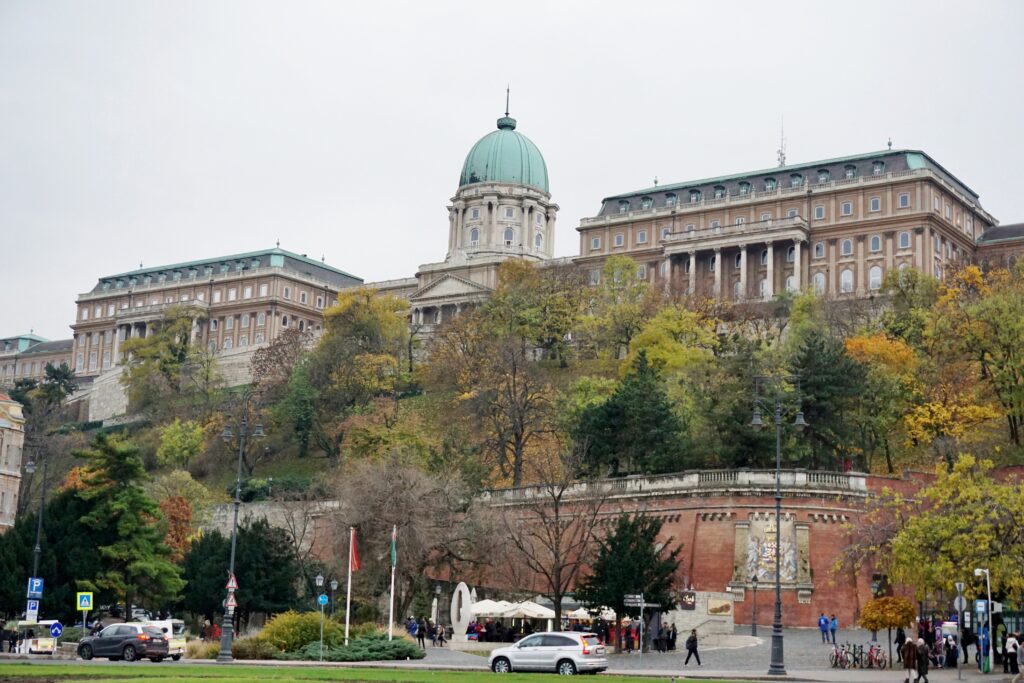
Containing the Hungarian National Gallery, National Szechenyi Library and the Castle Museum, this palace has a significant historical presence which is not shown today. It is the place where one of the mightiest castles in Europe stood for 7 centuries, during which time it was destroyed and rebuilt at least 6 times. Back then, it was called the Royal Palace and it was the place where Hungary was controlled from. The first occupants settled here in the 13th century after the Mongol attacks. During the 15th century when Hungary was under the rule of King Matthias, Buda was one of the most influential cities in Europe. Matthias expanded and enriched the palace. The Turks arrived in 1541 and ruled Hungary until 1686 when the Habsburgs took it back.
Then when WWII ended, Buda became the front line between the Nazis and the soviets who were approaching, Buda became the military line between the Nazis and the approaching soviets. The soviets then sieged on the hill where this castle stands for a few months. The palace that stands today was built in gothic style from the rebel of WWII.
Address: Budapest, Szent György tér 2, 1014 Hungary
Getting there: After crossing the Szechenyi Chain Bridge, take the Buda Funicular up for €5 round-trip, or walk up 1 km to the castle.
Opening hours: 10:00-18:00 Tuesday to Sunday. Closed Mondays.
Entry fee: €5 to visit the galleries and museums.
Matthias Church
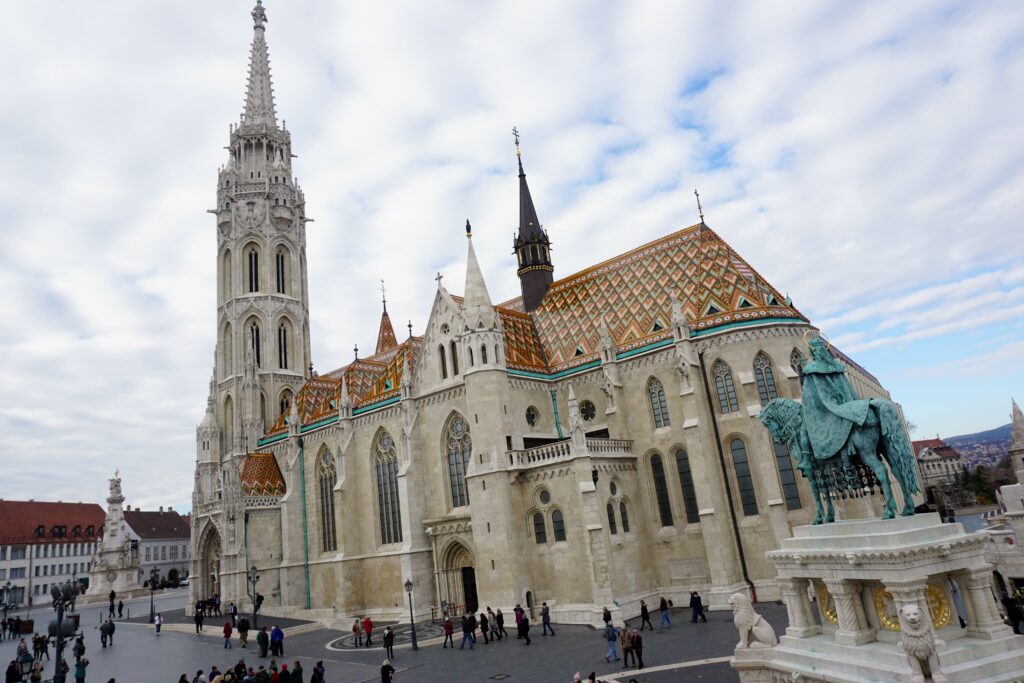
Known as The Church of the Assumption of Buda Castle, the interior of the 800-year old Matthias Church tells 1000 years of history. Just like the Buda Palace, this church was also destroyed and rebuilt several times. The neo-Gothic paintings in this church are paintings of the crusader heroics beating back the Turks. When the Turks came and took over Buda, this church was used as a mosque for over 100 years. According to legend, when the Turks departed, this was the only part of Buda that was retaken without a fight. The dazzling steeple and other frills that one sees in the Matthias Church today were added for the celebrations of 1896.
Address: Budapest, Szentháromság tér 2, 1014 Hungary
Getting there: short walking distance from the Buda Palace.
Opening hours: 09:00-17:00 weekdays, 09:00-13:00 Saturdays, 13:00-17:00 Sundays. Religious ceremonies could affect these hours.
Entry fee: €5
Fisherman’s Bastion
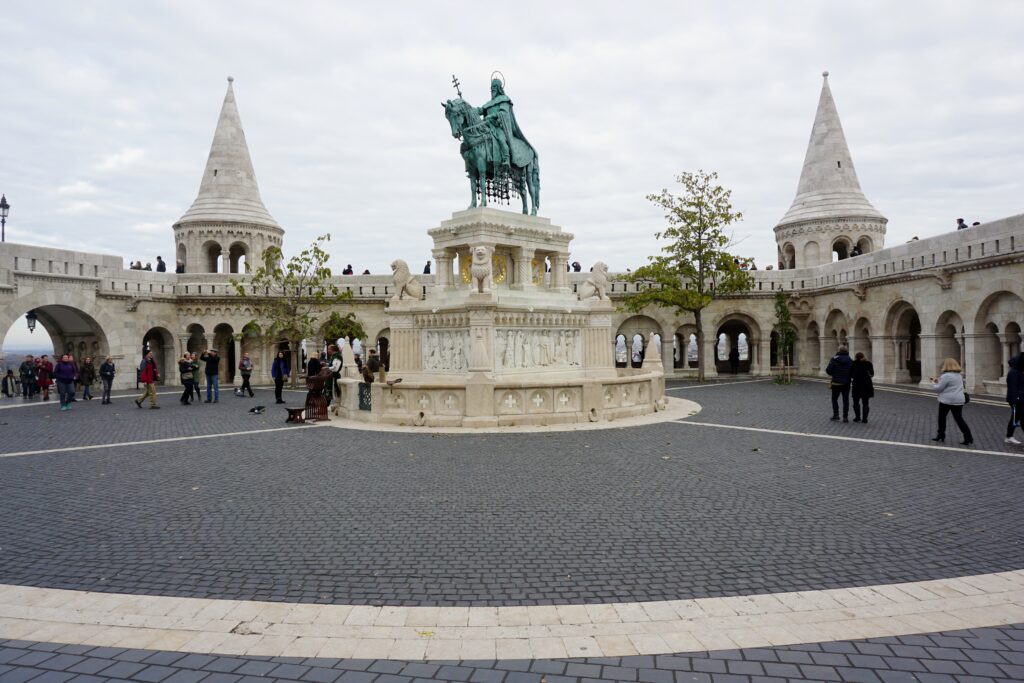
Offering panoramic views of the Danube and Pest, the 7 towers of Fisherman’s Bastion show the tents that the first Magyars who arrived here called home before moving to other parts of Europe. The statue shown is of St. Stephen, the first Christian king of Hungary (the same king that St. Stephen’s Cathedral represents). He created solid laws, introduced the theory of private property, and made the population of Hungary Christian. The pope crowned St. Stephen in the year 1000, and that was an important point in the history of Hungary. While Stephen could have taken his crown from the leader of the Byzantine Church, he chose to have the rule legislated by the pope of the Roman Church. This brought more of a Western culture to Hungary.
Address: Budapest, Szentháromság tér, 1014 Hungary
Getting there: Fisherman’s Bastion is next to the Matthias Church
Opening hours: 09:00-23:00 daily
Gellert Hill
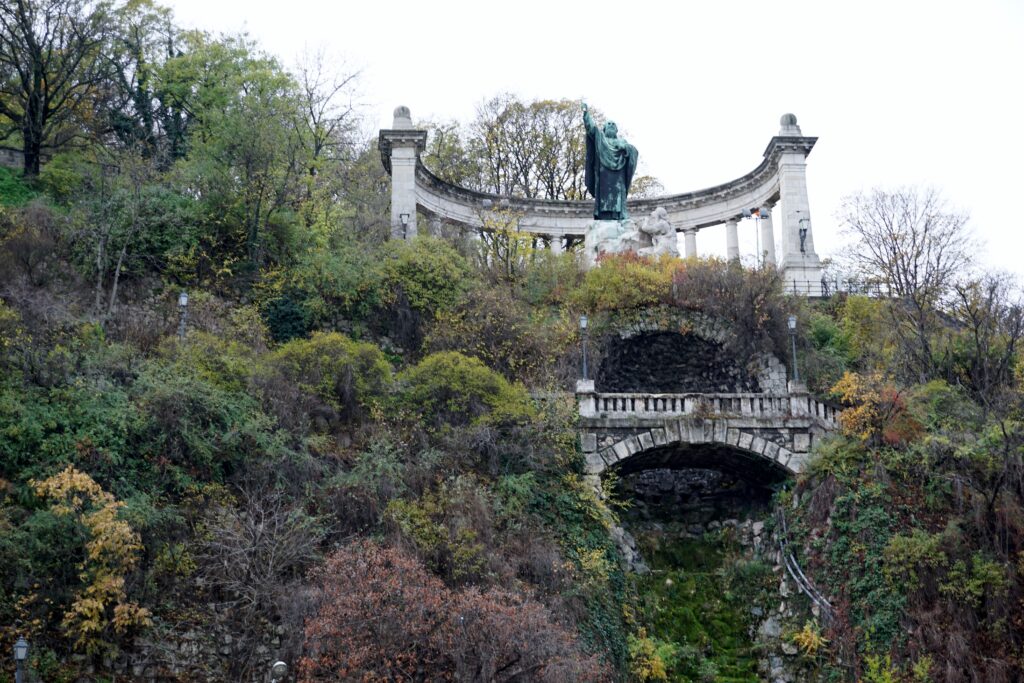
Standing 230 meters above sea level on a hill made of limestone rock, Gellert Hill is topped by the Liberation Monument. The hill was named after Bishop Gellert, who came to Hungary by the orders of King Stephen, to participate in the conversion of the Magyars in order to promote Christianity. However, he came to an unfortunate demise when he was thrown off this spot by pagan Hungarians. Gellert Hill saw action during WWII and the 1956 Hungarian Revolution, when Soviet tanks stood up on the hill and fired down into the city. The slope of hill towards the Danube shows how nature and human hands work together.
Address: Budapest, 1016 Hungary
Getting there: sightseeing tours stop at Gellert Hill. Alternatively, take the M2 metro line to Batthyany ter Station, and then tram 19 or 41 to the Gellert Baths/Hotel.
Opening hours: 08:00-19:00 daily
Best ways to sightsee Budapest
Free Budapest Walking Tour
One of my favorite ways to explore a city is to take a walking tour. Many cities in Europe (even the small cities) offer free walking tours. These tours are a great introduction to the city, the attractions and the history of the city. Although advertised as “free”, the tour guides make a living based on tips they get. It is not mandatory, but definitely recommended, to tip. The tour guides will mention that. I always tip €10-20. After all, the tour is completely free, so it would only be fair to them to get some sort of tips. At the end of the tour, the guides will answer any questions regarding food, bars, activities or transportation in the city.
Budapest has a variety of walking tours. All tours meet at Erzsebet Square. For more information and to book, click here.
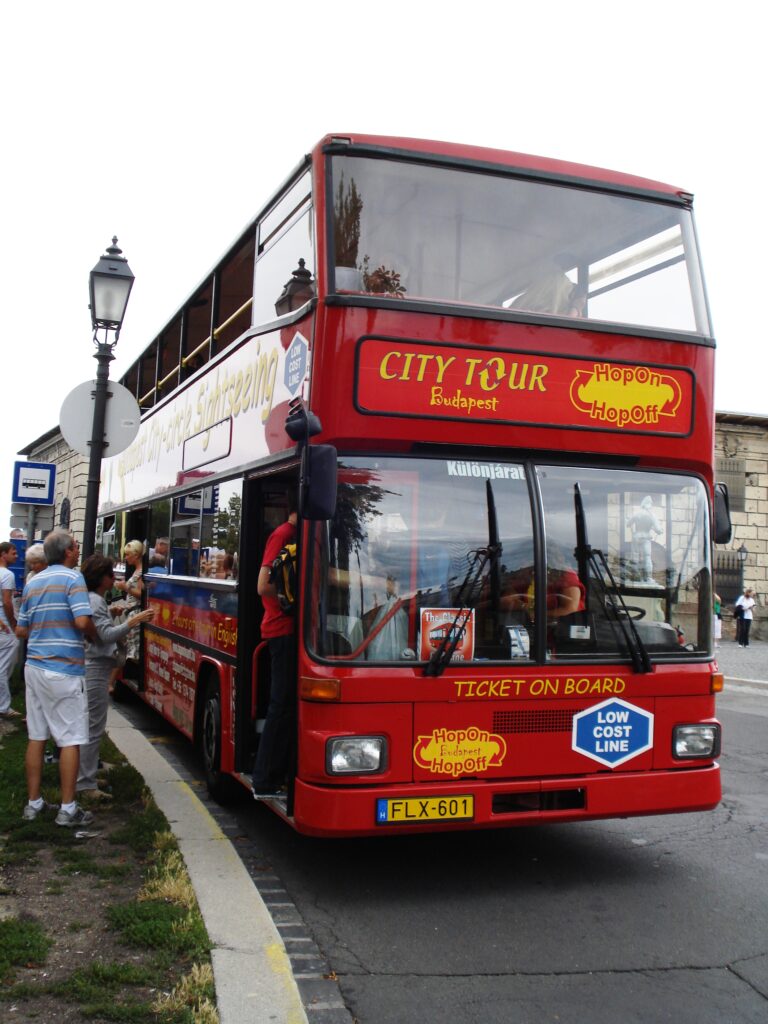
City Sightseeing Budapest
Budapest also has a hop-on hop-off tour. The tour takes travelers to all the attractions that this beautiful city has to offer. Travelers can hop off, visit attractions, and hop back on as many times as they want. A one-day hop-on hop-off pass is €24, while a two-day hop-on hop-off pass is €27.
Segway Tours Budapest
For adventurous travelers, rather than walking or taking the bus, one can also discover this city by Segway. There are a variety of Segway tours offered, depending on which area of Budapest you would like to visit. If you’ve never rode a Segway before, not to worry. They will train you completely.
